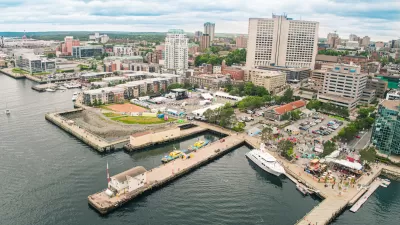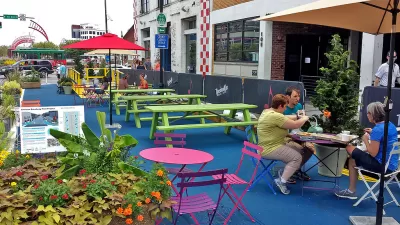Chuck Wolfe summarizes a major tenet of his new book and suggests we risk ignoring the back story of urban forms and functions by failing to truly understand the traditional relationships between people and place.
Summarizing his new book Urbanism Without Effort, Wolfe emphasizes the importance of first isolating spontaneous and latent examples of successful urban land use, before applying any prescription of typologies, desired ends, or governmental initiative. He suggests "urbanism without effort" as the the basis for a clean, multidisciplinary slate for reinvigorating the way we think about urban development today.
Simply stated "urbanism without effort" is what happens naturally when people congregate in cities.
Rather than assume that the popular and touted is readily adaptable, or readily subject to metrics or labels, Wolfe argues that we should return to first principles and isolate the fundamental, vernacular relationships between city inhabitants and what surrounds them:
We need to look, analyze, and discern, until we remember what a basic sort of city life looks like. While we consider these inherent factors that shape spaces and their use, we also must remember that there is a certain, spontaneous magic attributable to good urban places that can awaken them, but will only occur when they are locally relevant and embraced.
FULL STORY: The Dynamic Potential of Urbanism Without Effort

Alabama: Trump Terminates Settlements for Black Communities Harmed By Raw Sewage
Trump deemed the landmark civil rights agreement “illegal DEI and environmental justice policy.”

Study: Maui’s Plan to Convert Vacation Rentals to Long-Term Housing Could Cause Nearly $1 Billion Economic Loss
The plan would reduce visitor accommodation by 25% resulting in 1,900 jobs lost.

Why Should We Subsidize Public Transportation?
Many public transit agencies face financial stress due to rising costs, declining fare revenue, and declining subsidies. Transit advocates must provide a strong business case for increasing public transit funding.

Paris Bike Boom Leads to Steep Drop in Air Pollution
The French city’s air quality has improved dramatically in the past 20 years, coinciding with a growth in cycling.

Why Housing Costs More to Build in California Than in Texas
Hard costs like labor and materials combined with ‘soft’ costs such as permitting make building in the San Francisco Bay Area almost three times as costly as in Texas cities.

San Diego County Sees a Rise in Urban Coyotes
San Diego County experiences a rise in urban coyotes, as sightings become prevalent throughout its urban neighbourhoods and surrounding areas.
Urban Design for Planners 1: Software Tools
This six-course series explores essential urban design concepts using open source software and equips planners with the tools they need to participate fully in the urban design process.
Planning for Universal Design
Learn the tools for implementing Universal Design in planning regulations.
Smith Gee Studio
Alamo Area Metropolitan Planning Organization
City of Santa Clarita
Institute for Housing and Urban Development Studies (IHS)
City of Grandview
Harvard GSD Executive Education
Toledo-Lucas County Plan Commissions
Salt Lake City
NYU Wagner Graduate School of Public Service





























